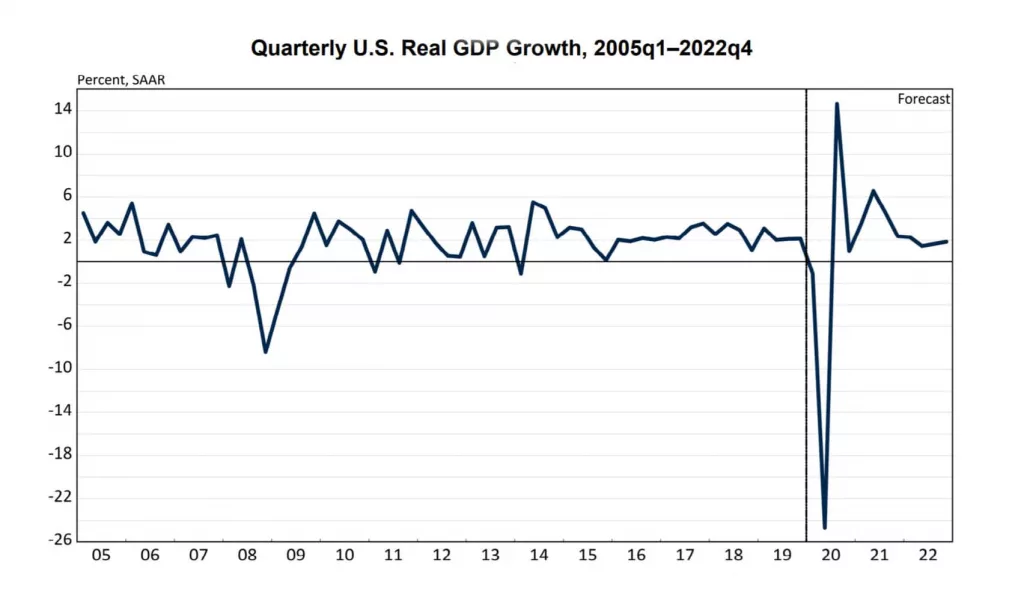Anybody paying attention to the ever-changing landscape of the nation’s economy is likely bracing for the roller coaster ride to continue, but there is a glimmer of hope from the latest quarterly forecast from economists at the University of Michigan who see recovery down the road. However, the ride along the way could be hair-raising.
In the new report released Thursday, U of M economists say, “We now expect U.S. real GDP to decline by 7-percent from the first quarter to the second quarter of the year, or 25-percent on an annualized basis,” and then add, “We expect real GDP growth to rebound partially in 2020-Q3, but the next surge in growth will have to wait until mid-2021, after a vaccine becomes widely available.”
The team of renowned economists say the COVID-19 pandemic will lead unemployment rates to rise higher than those during the Great Recession. Still, an aggressive federal financial response and improving public health picture should usher in some steps toward recovery starting in the second half of 2020.
In an interim update to the U.S. and Michigan Economic Outlook for 2020-2022 released Thursday, the economists expect the U.S. real gross domestic product to drop 7-percent from the first quarter to the second quarter of this year, or 25-percent on an annualized basis. The national unemployment rate is expected to reach 16-percent in May and average 14-percent during the second quarter.
The forecast is more bleak for Michigan, with an unemployment rate expected to rise to about 24-percent in the second quarter. That’s higher than during the 2009 recession, as well as the state’s previous peak jobless rate of roughly 16-percent in the fourth quarter of 1982.
The economists, who are part of U-M’s Research Seminar in Quantitative Economics, wrote, “This recession is very different from previous downturns because limiting the spread of the disease requires many non-essential workers to stay away from their jobs.” They add, “Therefore, the current reduction in economic activity is an investment in public health. Of course, along with that goal comes the responsibility to cushion the economic hardship inflicted by the pandemic.”
The economists see some good news with respect to the federal response through various stimulus efforts that were “faster and more aggressive than we had expected.” Still, they add, more help for small businesses and state and local governments will be necessary.
The forecast assumes the public health picture will improve in the weeks ahead, allowing for the economy to begin rebounding in early June and jobless rates to start to fall. However, the economists caution “another surge in new cases” and the attendant orders to counteract cannot be ruled out.
To see the full forecast update from the University of Michigan, click the link below:






